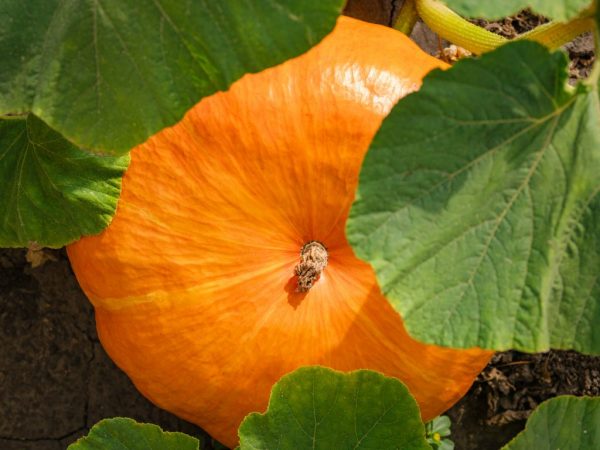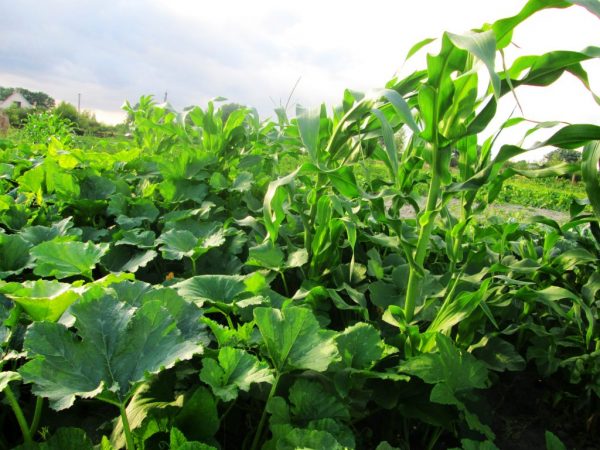Rules for the neighborhood of pumpkin with other vegetables
With the arrival of spring, gardeners begin to actively prepare for the upcoming growing of vegetables and fruits. It is important to carry out the correct crop rotation and distribute the plants on the site so that they do not harm each other. Their proximity to pumpkin and other melons and gourds deserves special attention.

Rules for the neighborhood of pumpkin with other vegetables
Planting a pumpkin next to a vegetable marrow
These crops belong to the same family. These are dietary, healthy vegetables, which are widely used not only in cooking, but also in folk medicine, cosmetology, etc. Despite the "kinship", the cultivation of these crops in the open field is somewhat different.
Experienced gardeners categorically do not recommend planting a pumpkin with zucchini. This is due to several significant reasons:
- both crops need a lot of free space: the lashes of plants go far beyond the space allocated to them. They can intertwine, interfering with the normal development and formation of each other's ovaries;
- planting pumpkins and zucchini in neighboring or nearby beds can provoke cross-pollination of crops. In this case, the variety of plants will be lost - the fruits will turn out to be hybrid. If this is less scary for a pumpkin, because it belongs to the dominant culture in this case, then the second vegetable will become unsuitable for eating them.
Sometimes these crops are planted in neighboring beds. In this case, it is important that the distance between the plants is at least 3 m, and their lashes should be systematically directed in the opposite direction from each other. It should be borne in mind that even in these conditions, the risk of cross-pollination does not disappear.
To harvest a full harvest of squash and pumpkin, planting them nearby is not recommended.
Neighborhood pumpkin with eggplant
Eggplant is a popular vegetable for cultivation. Most of its varieties are designed for cultivation in greenhouses and greenhouses. If you decide to plant a vegetable outdoors, you should take care of choosing the right place for this.
The pumpkin, due to its active growth, can drown out the plant, preventing it from developing correctly. This will lead to the fact that the eggplant crop will be inadequate and meager, and the fruits themselves will be deformed.
If the size of the plot does not allow allocating a distant place for the pumpkin, and eggplants had to be planted next to it, in this case it is recommended to put a kind of partition between them (oilcloth, wooden shield, etc.).
The culture in this case will not harm the growth and development of eggplants. This will also protect vegetables from contaminating each other with typical diseases.
Favorable neighborhood
Neighborhood with a pumpkin crop does not harm corn. If, at the same time, beans are still planted nearby, they will constantly saturate the soil with nitrogen, which has an extremely favorable effect on its development.

Pumpkin gets along well with corn
Vegetable growers note the good neighborhood of pumpkin with early onions.While it is time for the active development of the first crop, onions are already approaching the harvesting stage. You can plant winter garlic next to the pumpkin, which protects the plant from diseases and pests.
Greens are grown between the pumpkin beds: parsley, dill, cilantro. These fragrant herbs are picky, and such a neighborhood does not bother them.
Unwanted neighborhood
When planting a pumpkin next to other garden crops, several factors should be considered:
- different plants must be placed from each other as far as possible;
- having found a disease or pests in one variety of vegetables, it is recommended to carefully examine its "neighbors" and carry out preventive treatment. A diseased plant should be isolated or removed from the garden;
- feeding the pumpkin is carried out separately from the crops adjacent to it;
- with a small area of the site between different plants that are not "friends" with each other, a kind of partitions are installed.
In addition to zucchini and eggplant, pumpkin neighborhood is undesirable with the following crops:
- cucumbers;
- almost all varieties of cabbage;
- tomatoes;
- other varieties of pumpkin or melons;
- other undersized varieties of vegetables that react painfully to such a dominant and powerful consumer of nutrients as pumpkin.
Crop rotation rules
Pumpkin is characterized by a powerful and strong root system, which significantly impoverishes the soil, taking away all the nutrients from it. The garden bed on which the pumpkin grew must be fertilized in the fall. The culture needs deep placement in the soil, therefore, after removing its rhizomes, loose and oxygenated soil remains in their place.
If proper care has been established for the pumpkin, practically no pathogens remain in the soil after it that can harm other plants.
The next year, after the pumpkin, it is recommended to plant peppers, tomatoes, beets, carrots, cabbage, onions and garlic. From aromatic herbs in the same place, you can grow sorrel, spinach, parsley.
It is for them that the soil after the pumpkin is most suitable: it practically does not contain pathogenic microbes and is enriched with many trace elements that are necessary for obtaining a bountiful harvest.
It should be borne in mind that after harvesting pumpkin plants, it is advisable to additionally enrich the soil under them before future planting. This is done in late autumn with organic fertilizers. The place where pumpkin was grown last year will be actively overgrown with weeds next season, so you need to be ready for this.
A characteristic feature of pumpkin is that it is highly undesirable as a "predecessor" for its "congeners" - cucumbers, zucchini and other crops. Planting the same vegetable or belonging to the same family in the same place can provoke diseases characteristic of this type of disease.
A bountiful harvest in the beds will delight gardeners only if the neighborhood of vegetable crops is previously correctly determined. For greater clarity, before sowing, you can draw up a plan for placing plants on the site. Rational recommendations will help you make the right choice of "neighbors" for the pumpkin in the garden.


